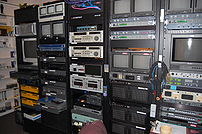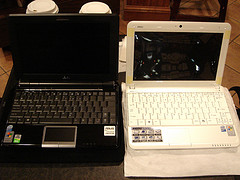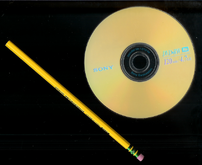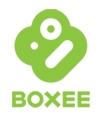- Image via Wikipedia
Another 158 stations will be shutting off their analog broadcast before June 12, the revised shutoff date. Fifty-eight of those stations are PBS stations, many of which cannot afford the continual expense of analog broadcasts. The FCC could prohibit a station from shutting down early to make sure that people can get at least one station broadcasting in analog in their area. Here is the list of all 158 in PDF Format.
We predict as time continues, more stations will opt to switch to digital early. Month to month, more people prepare for the digital transition, stations feel more confident with the early switch. It may be by the end, only some of the network affiliates will be left.
Engadget HD points out that Windows Media Center is not quite ready for the digital transition. It needs to release some patches to provide proper guide data for digital broadcast channels. We prefer MythTV, an open-source DVR which, in combination with Schedules Direct(a $20 a year nonprofit TV listings service), has fairly accurate scheduling data and has great support for OTA(cable as well, but cable providers often encrypt channels).
The irony of digital broadcasts is that, without moving our old roof-mounted antenna which was installed with the building a quarter century ago, we’ve had a wide variance in quality. We picked up cable around 2000, when the quality of network broadcasts in analog dropped to the point it was difficult to watch. That kept us off analog till last year, when we bought an indoor antenna to see what we could pick up, and ultimately reconnected a wire to the old antenna on the roof. Since then, without again touching the antenna on the roof at all, the digital reception has decreased to lose us two local PBS affiliates, and a local MyNetwork affiliate. We may need to replace or investigate that one of these days.
On a positive note though, the stations we do get are crystal clear. Which is certainly an advantage. More on this later…
Related articles by Zemanta
- FCC to TV stations ready to make the digital switch: Not so fast (sciam.com)
- Some TV Stations To End Analog Signal On Feb. 17 (huffingtonpost.com)
- Some Viewers Lose In Digital TV Switch (cbsnews.com)
- FCC nixes early DTV switch for 123 stations; 368 on track (arstechnica.com)



![Reblog this post [with Zemanta]](http://img.zemanta.com/reblog_e.png?x-id=4d58cfd9-ad4b-4b5a-9bca-b39fa8fa4901)


![Reblog this post [with Zemanta]](http://img.zemanta.com/reblog_e.png?x-id=600f4ba9-4c16-4a27-9e3f-2cd7b5e643e2)


![Reblog this post [with Zemanta]](http://img.zemanta.com/reblog_e.png?x-id=de53b5bb-d875-45e8-b08f-8cafd6ddb2d7)


![Reblog this post [with Zemanta]](http://img.zemanta.com/reblog_e.png?x-id=b5113733-ce84-45f9-8055-fa1e0b1b699e)


![Reblog this post [with Zemanta]](http://img.zemanta.com/reblog_e.png?x-id=f0dbd97a-0480-4e07-94fd-368fde8cc416)
![Reblog this post [with Zemanta]](http://img.zemanta.com/reblog_e.png?x-id=16d8913b-d9a1-476b-8156-51a27db5066e)


![Reblog this post [with Zemanta]](http://img.zemanta.com/reblog_e.png?x-id=c0487271-7e93-46b8-83ae-4a99ad64aab5)


![Reblog this post [with Zemanta]](http://img.zemanta.com/reblog_e.png?x-id=5eda5cca-7296-46c1-86e1-aedda823e31b)


![Reblog this post [with Zemanta]](http://img.zemanta.com/reblog_e.png?x-id=576f0e54-0473-48c7-9695-860315830b86)


![Reblog this post [with Zemanta]](http://img.zemanta.com/reblog_e.png?x-id=bbccdbe4-582e-4e5a-9e02-dd017945e782)